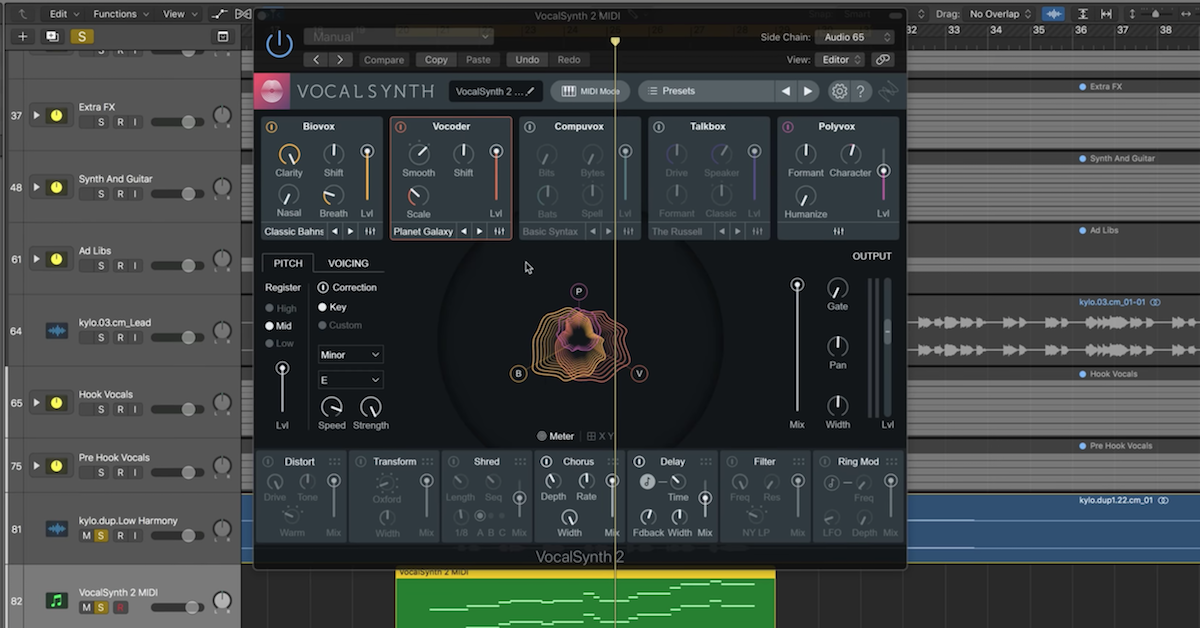5 Creative and Legal “Sampling” Techniques for Your Productions
Article Content
➥ The new e-book from Cristofer Odqvist is available now
Sampling is a practice most commonly associated with Hip-Hop production and beatmaking. But even before samplers became an accessible tool for Hip-Hop artists and producers, session musicians were brought into the studio to replicate parts of a record, and drum breaks and musical parts were played back and repeated in real time by DJs playing vinyl records.
The two main issues people have had with the art of sampling are:
- It’s illegal to use even a small part of someone else’s copyrighted music or recording thereof.
- It’s simply stealing someone else’s work and is not creative compared to making something unique from scratch.
While the first point is hard to argue against, there are numerous examples of the use of sampling that, at least in my opinion, crushes the second point. While sampling by cutting up and looping parts of a record can be awesome, I’ll hereby list a few techniques that are related to traditional sampling but really quite different. I’ll focus on specific individual elements of a song or production.
Some of these techniques are nothing new, in essence, but thinking of them as “sampling” might open up new ways to think about them, new workflows and new doors of creative inspiration.
1. Frequencies
Sampling frequency curves is, in my opinion, a very overlooked technique that can yield pretty fantastic results. To do this, use an EQ that can do EQ matching. I personally use FabFilter’s Pro-Q 2 for this task, but there are others like the one included in Logic Pro. An old vinyl drum break is a good source for this type of sampling, but as always, your imagination is the only limit.
To do this, you let the EQ analyze the source material (the drum break in this case), then you let it analyze the track that will get the new “sampled” EQ curve. A curve of the difference between the two files is generated. It’s good to level match the files as much as you can before doing this, but even then, the curve you get is most likely pretty crazy. Most of the time you’ll end up adjusting the percentage of the effect so you end up with way less than 100% to get a usable result. Experimentation will take you far here.
2. Melodies
But surely melodies are copyrighted and you’ll get into trouble if you take a part of it and use it as your own? Not necessarily.
Let’s be clear here, you can’t just take a melody and use it; not even if you change key and move one or two notes around. What you can do, however, is “sample” an element of it, then use that element as a jumping-off point and change it around a bit as you go.
Examples
Take a melody that speaks to you and learn to play it or sing it. Now, get rid of the pitches and play/sing the melody using a single pitch (note) but keep all the rhythmic elements (phrasing) like pauses, lengths of the the notes, etc. This is the time you stop thinking about the original melody and start inserting pitches and building your own melody. If you have a lyric or some rough idea of lyrical content, let the words come out and see on what notes they land on. It’s a good idea to record several attempts and go back and listen to what works best. When you have a melodic idea you like, you can start loosening up on the rhythmic structure and see if you can change it up to enhance the new melody.
You’ll see that your new melody will most likely not resemble the original melody where you took the phrasing.
Another way to do this is going after the pitch of the notes instead. Contrary to the previous example, you don’t copy elements of the “sampled melody” exactly. Rather, you look at notes as if they were a landscape; learn the melody and use a pen and paper to note down where the melody is ascending or descending or staying on the same pitch. When you’re done you should have a visual map of the melody that looks something like a stock market diagram. Use this as the contour of an original melody. It’s also useful to do this with whole songs to learn a lot about the craft of effective melodic writing.
3. Lyrics
Just like in the melody examples, there are different elements to focus on here.
You can copy the exact length of the phrases and the rhyme scheme (e.g. A B A B), you can copy how the lyrics unfold in the first and second verse (i.e. the story), you can ask yourself: what part of the story does the chorus and the bridge tell?
4. Form
This is one of my favorite ways to learn about the craft of music production. Again, it’s like making a map.
Pick a track that you find really effective at keeping your interest and that has a good ebb and flow of tension and release. Write out the bars of the track on a piece of paper and note where transitions and fills occur (on what beat of what bar, etc.)
When you look at this map you should be able to see clearly things like how many bars the production stays the same for and where it changes (you can either write specific things like “shaker comes in” or general things like “two new elements added”). Make a few maps like this (it takes a bit of practice to make ones that have all the relevant information without looking too cluttered) and you have a nice little library of road maps for your productions. This is awesome when you get stuck in making loops and not being able to get to a finished arrangement.
5. Yourself
The one place where you can get away with sampling the old school way is when you’re sampling your own tracks. This is useful both for adding new parts to a song and to get material for a new track. I’ve done this by mistake many times and it has taken productions to the next level in creativity. The loop function in your DAW is a great tool.
Here are three ways to use it to pan for gold in a track:
- Make a really short loop (like one or two beats). This is great for finding interesting stabs and rhythmic elements that you can cut up and use in new places.
- Make a one bar selection but move it a beat or two forward to get a completely new start and end point.
- Make a selection with uneven beats and try it on several bars until you hear something rhythmically or melodically interesting. Then find a way to make that melody or rhythm work in a bar with an even amount of beats.
Have fun!
Take Your Music to the Next Level
Making Sound is available now, a new e-book filled with 15 chapters of practical techniques for sound design, production, mixing and more. Quickly gain new perspectives that will increase your inspiration and spark your creativity. Use the 75 additional tips to add new sparkle, polish and professionalism to your music.






